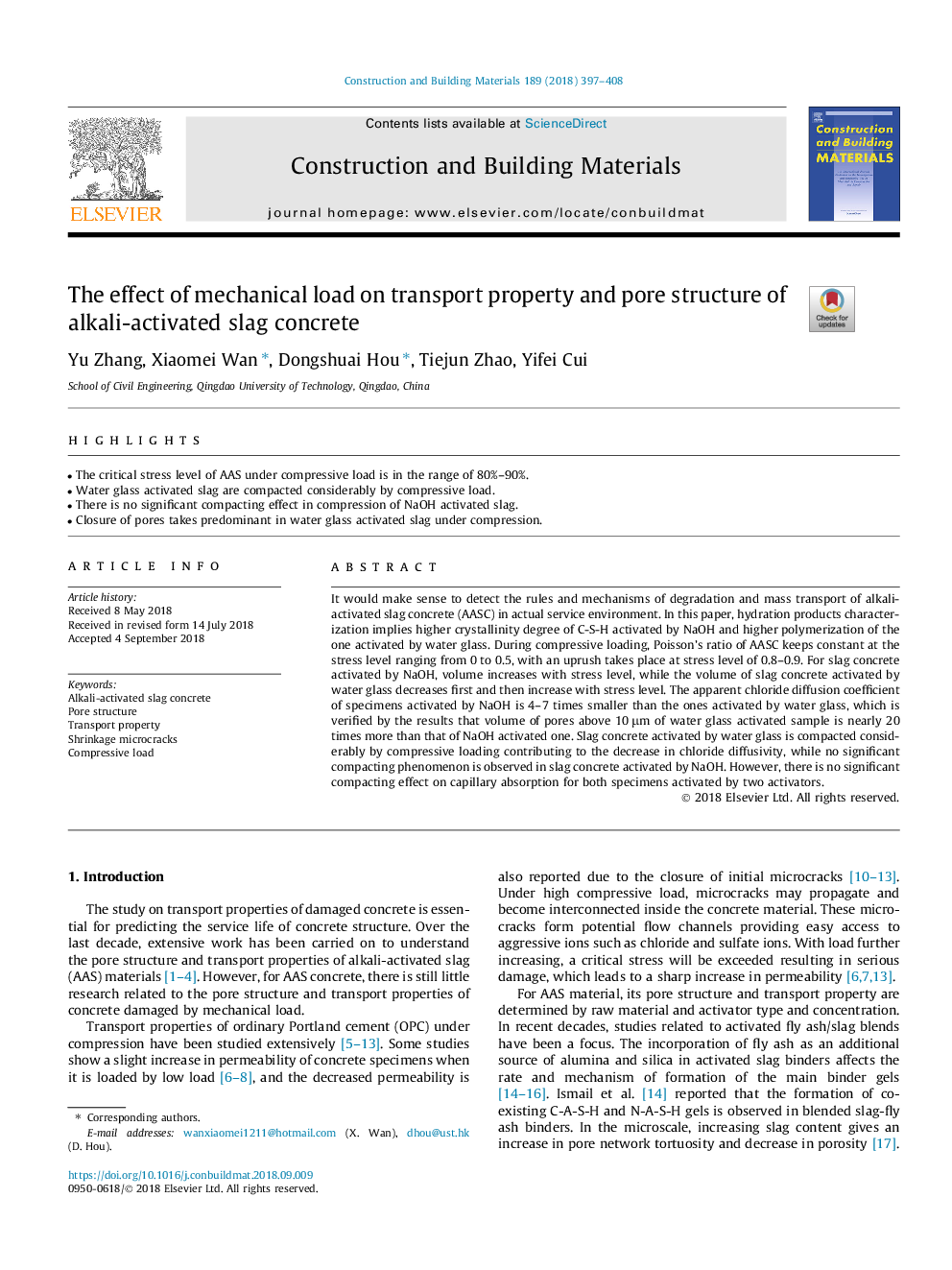| Article ID | Journal | Published Year | Pages | File Type |
|---|---|---|---|---|
| 10145679 | Construction and Building Materials | 2018 | 12 Pages |
Abstract
It would make sense to detect the rules and mechanisms of degradation and mass transport of alkali-activated slag concrete (AASC) in actual service environment. In this paper, hydration products characterization implies higher crystallinity degree of C-S-H activated by NaOH and higher polymerization of the one activated by water glass. During compressive loading, Poisson's ratio of AASC keeps constant at the stress level ranging from 0 to 0.5, with an uprush takes place at stress level of 0.8-0.9. For slag concrete activated by NaOH, volume increases with stress level, while the volume of slag concrete activated by water glass decreases first and then increase with stress level. The apparent chloride diffusion coefficient of specimens activated by NaOH is 4-7 times smaller than the ones activated by water glass, which is verified by the results that volume of pores above 10â¯Î¼m of water glass activated sample is nearly 20 times more than that of NaOH activated one. Slag concrete activated by water glass is compacted considerably by compressive loading contributing to the decrease in chloride diffusivity, while no significant compacting phenomenon is observed in slag concrete activated by NaOH. However, there is no significant compacting effect on capillary absorption for both specimens activated by two activators.
Related Topics
Physical Sciences and Engineering
Engineering
Civil and Structural Engineering
Authors
Yu Zhang, Xiaomei Wan, Dongshuai Hou, Tiejun Zhao, Yifei Cui,
